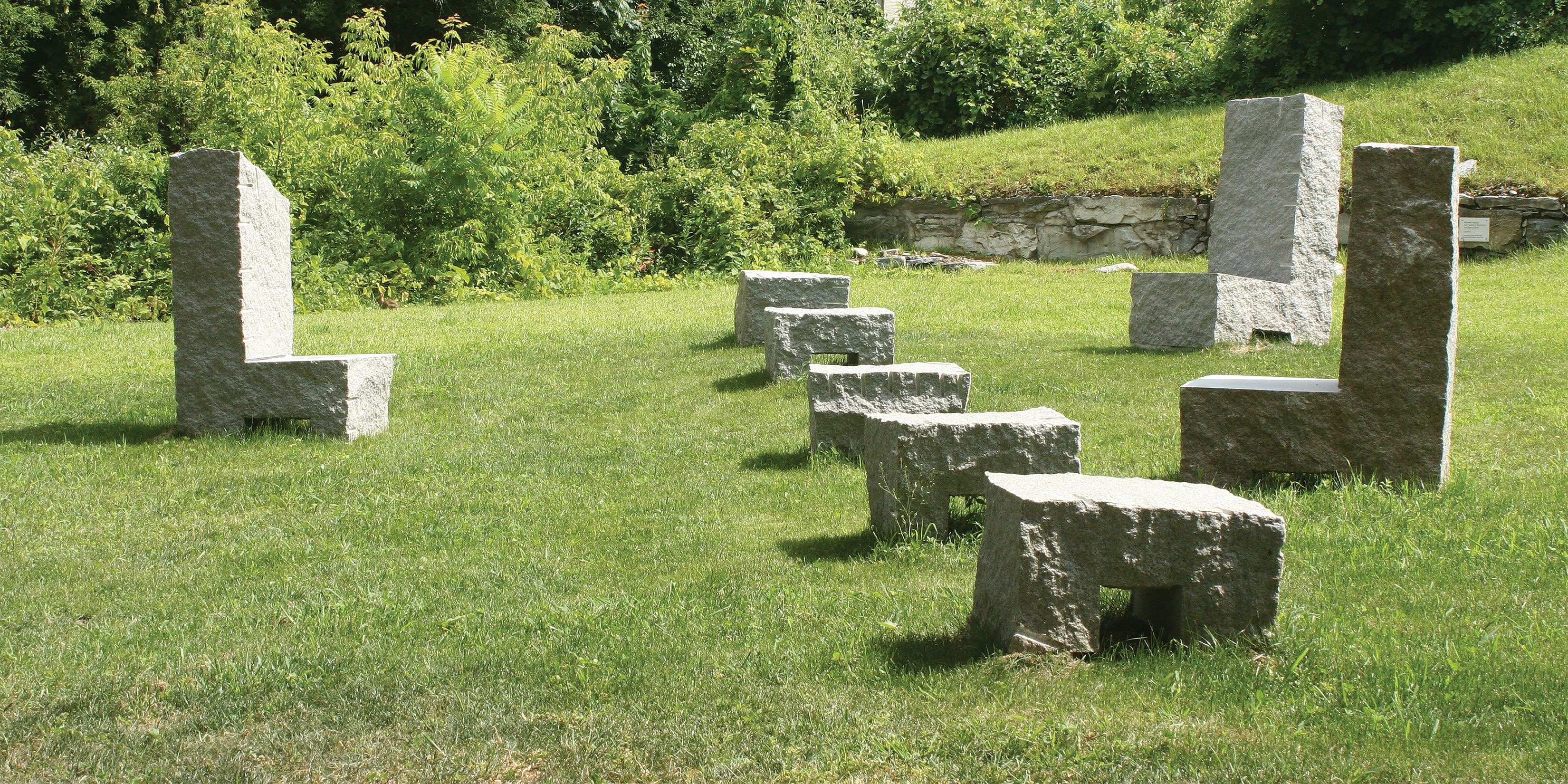 Exhibition
Exhibition- Closed for the season, on view spring 2024
- MASS MoCA
“There is a language of place, and it is the most direct human language there is; the most basic way to impose human order and meaning on an outside, non-human world.” — Richard Nonas
Following his ambitious exhibition in Building 5, The Man in the Empty Space, Richard Nonas has created a long-term, outdoor installation in granite for the museum grounds. For five decades, he has made works that alter our sense of landscape and architecture — of place — using the simplest of means. His vocabulary includes pared-down forms and earthy and industrial materials that have a timeless, even totemic quality. Nonas has now reimagined the southeast corner of MASS MoCA’s campus with Cut Back Through (for Bjorn), a new arrangement of the three large granite chairs and five granite stools first seen in MASS MoCA’s galleries.
Nonas often changes already-existing works into new combinations, and thus new works. And like Cut Back Through (for Bjorn), many of his works are often arranged in pairs, series, or grids which create a dialogue and tension between the individual elements while creating a new whole from these parts. The grouping of granite sculptures functions as a cut into the landscape, but they also offer museum-goers a place to rest both their bodies and minds, allowing for — and indeed provoking — intuitive, visceral responses.
The granite used to make the chairs and stools was sourced in Sweden from a quarry owned by a long-time friend of the artist (the Bjorn of the title). Nonas used the materials with great efficiency; the stools are the remnants — or offcuts — left after the chair has been excised and split from the granite block. Confusing usual distinctions between art and function, the chairs confirm that for Nonas a compelling object is a compelling object, without distinction. And while Nonas’ works are familiar, they emanate powerfully and remain open and shifting — both visually as viewers walk around and through them and in meaning and association — balancing on the edge of one thing becoming another.
Granite chairs and stools at the quarry
photo by Richard Nonas


